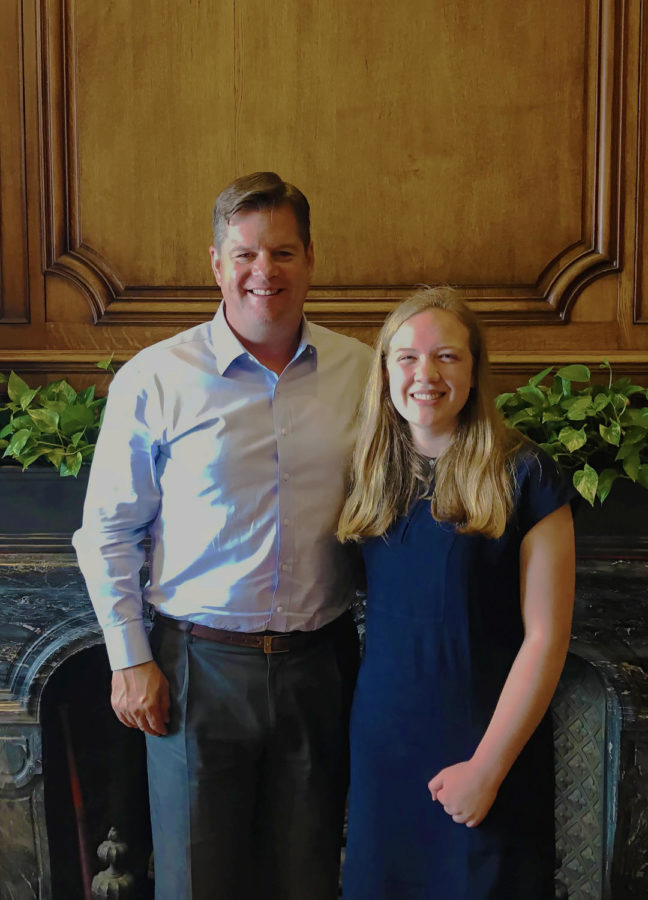As Interim Mayor Mark Farrell’s Term Comes to an End, He Sets Ambitious Goals for the Future of San Francisco
The upcoming mayoral election on June 5, 2018, comes at a major turning point for San Francisco. As the city faces widespread criticism on a number of issues such as homelessness, drug use, the rising cost of housing, and dirty city streets, one question arises: who will lead San Francisco towards a better future, and how? I sat down with interim mayor Mark Farrell, neighbor and family friend, to talk about how he is getting a head start on solving some of these pressing issues before the end of his term.
After Mayor Ed Lee died on December 12, 2017, Board of Supervisors President London Breed automatically became acting mayor of San Francisco. Due to what many considered a conflict of interest over Breed’s roles as President of the Board of Supervisors, acting mayor, and mayoral candidate, the Board of Supervisors elected Mark Farrell interim mayor of San Francisco on January 23, 2018. “As mayor who’s here for half a year in this office, [my role is] to set some ambitious goals, have staff that want these goals and want to work towards them, and really lead the direction and the ethos of the city,” said Farrell.
Homelessness and the affordable housing crisis often top the city’s agenda. According to Mayor Farrell, there are currently around 7,300 homeless people living in San Francisco. Farrell believes that a shift in policy is necessary for San Francisco to combat the rising number of homeless people on its streets.
“We’ve gotten to a point [where] we’ve taken compassion and now gone so far overboard to really enable a lot of street behavior, which I think is just the wrong direction for the city…We’re building a lot more capacity to get people off the streets but we also need to make sure that people do come off the streets when they’re asked,” explained Farrell.
His focus is predominantly on what he calls “prevention and diversion” programs. One example of this is Homeward Bound, a city government program that pays for bus tickets to help homeless people meet up with with family members willing to provide them with assistance. For next year, he is doubling the program’s annual budget, adding 1.2 million dollars.
Additionally, Farrell does have concerns about homeless communities that consistently refuse services and wants to draw a line for what behavior is acceptable. “Those that proactively choose to live on the streets because that’s what they want to do? Not here in San Francisco,” he warned.
Farrell also believes in the importance of having safe, clean neighborhoods. Recently, there have been many complaints from residents about trash, needles, and even feces on the streets, contributing to a general lack of cleanliness throughout the city. Farrell hired 10 full-time employees specifically to pick up needles around the city, and is working with Big Belly Solar to install more technologically advanced trash cans to better prevent overflow and littering.
Farrell also spoke about the effects of the opioid crisis in San Francisco: throughout my interview, he stressed that the city government was doing everything they could to combat drug abuse despite little aid from the federal government. “We need to pick up the slack here locally,” he said. “It’s a tough issue.”
Farrell is working on increasing the outreach of a couple innovative programs such as Health Fairs, where doctors and nurses visit homeless encampments to provide people with medical aid. He believes that programs like these are crucial in order to combat drug abuse in San Francisco. “When you treat the overall homeless population, you sweep in a lot of those with drug issues,” he said, “so hopefully we’re helping them out.”
I also spoke with Farrell about the three men who died of a fentanyl overdose outside Urban on February 22nd. In reference to the incident, he stressed that the city was doing everything they could to help decrease drug overdoses through administering Narcan (a medication often used to reverse an overdose), getting people with drug problems off of the street and into care, and instituting safe injection sites around the city.
Another issue that Farrell has focused on during his time in office is climate change: three days before Earth Day, Farrell made a new promise to the environment, tweeting “Today, we’re committing to net-zero greenhouse gas emissions by 2050 in San Francisco—a move that will eliminate the City’s carbon footprint.”
As a first step in this endeavor, Farrell included funding in next year’s budget to plant 2,000 trees in San Francisco over the next two years. Overall, however, “this is more about setting a few goals, starting a few initiatives to get there, and then having the confidence that people will continue to lead the issue forward.”
Interim Mayor Farrell has taken action on several big issues during his short time in office as mayor of San Francisco. He has funded homelessness programs and worked to get people who refuse services off of the street, increased the number of employees and health programs in order to combat drug abuse, and set ambitious goals for the city’s response to climate change. As Farrell’s term comes to a close, a new question arises: will the elected mayor of San Francisco continue to further his contributions or set a new direction for the future of our city?












